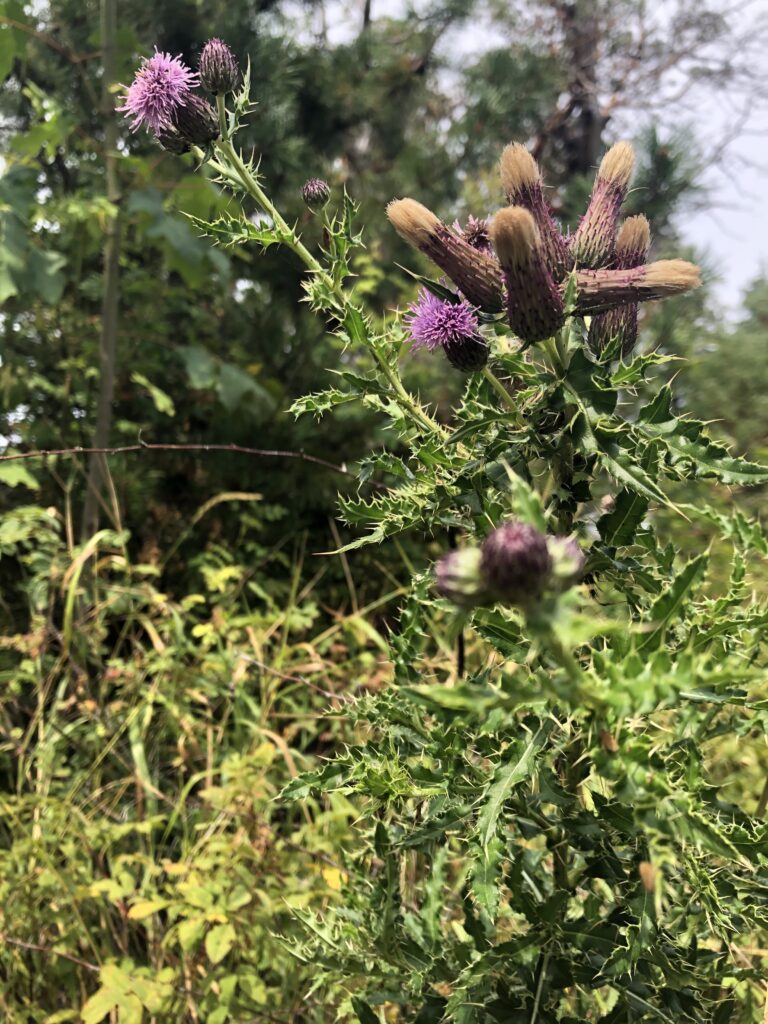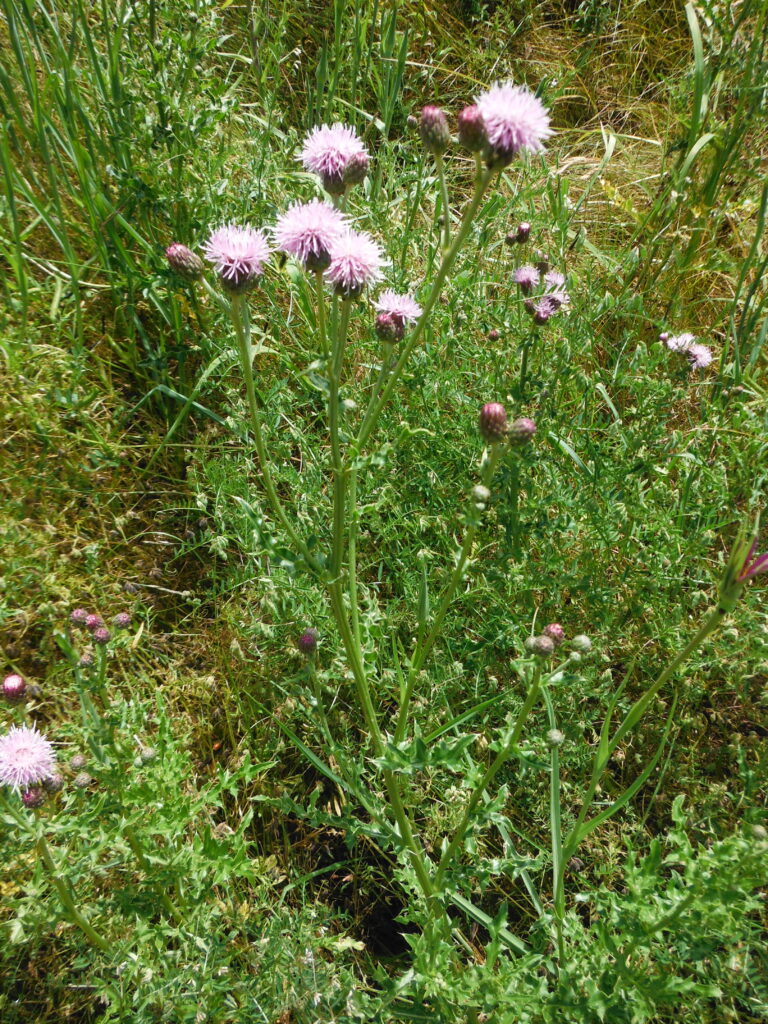Canada Thistle (Cirisum arvense)

Canada thistle is mainly found in open, sunny areas, and has lobed, spiny leaves and small purple flowers. Despite its name, the Canada thistle is not from Canada; it is an invasive species that was introduced to North America by colonists in the early 17th century. It is now considered a noxious weed in Canada, because of the damage that it causes to crops and natural ecosystems. In fact, it is even considered to be a weed in its native range due to its ability to outcompete other native species.

Canada thistle can reproduce through its roots, which spread horizontally and can produce new shoots up to 6 meters away from the original plant. In this way, it can quickly form dense patches that crowd out native grass species. Canada thistle can also spread through seeds, which are dispersed by the wind.

Canada thistle can be controlled using herbicides, as well as through mechanical methods. Since thistles can come back from very small pieces of root, it is very difficult to remove thistles by pulling them. Instead, the plants should be cut back before they flower. This prevents the population from spreading, and also depletes the plants’ energy reserves over time. Also, hardy native plant species can be planted to compete with Canada thistle, and to prevent it from returning once it has been eradicated.
For more information, visit the Invasive Species Council of BC website or the BC Species and Ecosystems Explorer.


